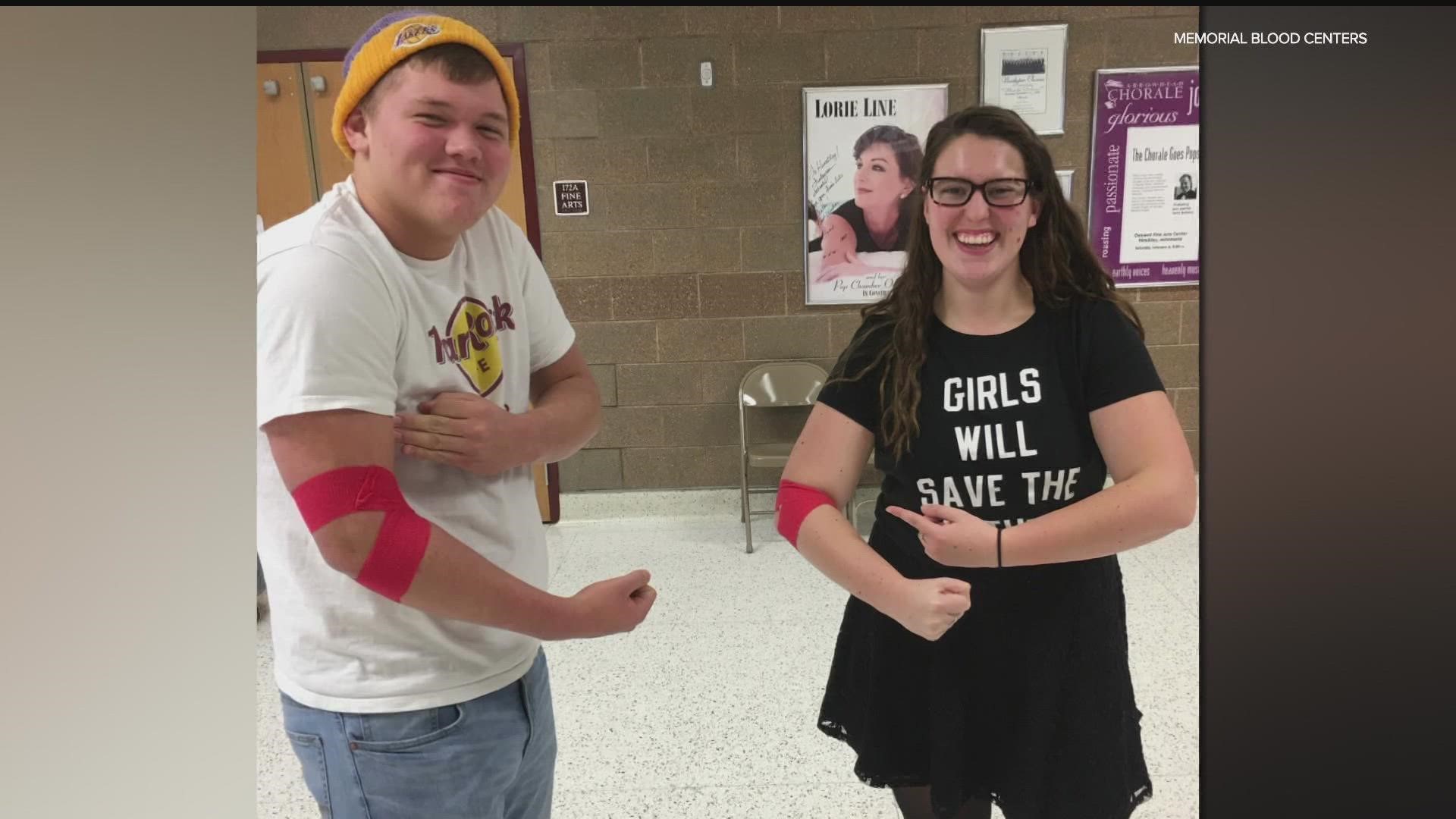ST PAUL, Minn. — Blood centers across the U.S. continue to suffer a massive blood shortage. The staff at Memorial Blood Centers in Saint Paul says they've lost older donors as more people began working from home during the pandemic, and they lost many younger donors since they weren't able to host blood drives at schools.
"Most of our new donors come to us through high school blood drives, and for two years there, we didn't have any high school blood drives," said Phil Losacker, manager of community relations.
At the same time, now that they're back in schools, they are still dealing with a challenge that's been there: keeping donors interested in giving during the summers and after graduation.
"In one aspect we're celebrating that they're back--high schoolers, college students are enthusiastic, great donors," Losacker said. "But we tend to get them at the high school, and then we don't see them again. So we're trying to attract them to come to our donor centers and to be more fully connected with us."
One of the ways they're doing that is by asking students to share their experiences on social media.
"We ask them to be influencers and to get the word out as well about donating," said Maryann Malec. "We have paddles that we can bring so they can get the word out on Instagram."
They also pass out t-shirts that have witty phrases about "things that hurt more" than giving blood. One t-shirt reads "Accidentally liking a post from 43 weeks ago."
Teenagers can donate at age 16 with written parental consent, and if they're 17 or older, they don't need it. Losacker and Malec also encourage families to donate blood together.
"We'd encourage parents to encourage kids to give blood," Losacker said.
Watch more KARE11 Sunrise:
Watch the latest coverage from the KARE11 Sunrise in our YouTube playlist:

